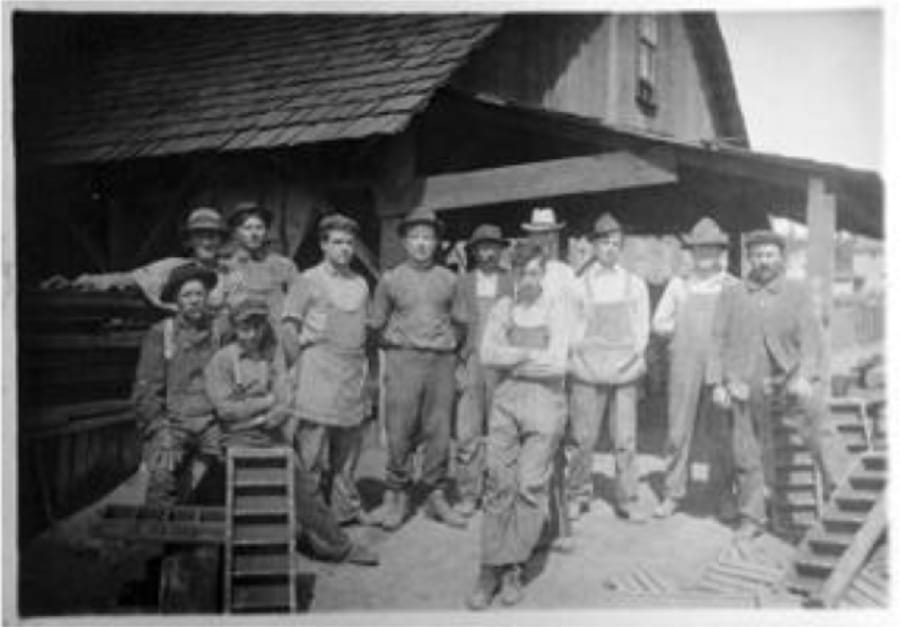Bricks, the oldest of handmade building materials, date back 9,000 years. But in Clark County, only to about 1846, when the Hudson’s Bay Company fabricated the area’s first bricks near today’s Amtrak station. The shallow clay was easy to dig, and laborers dried the bricks close by.
In and around Vancouver, about 10 clay yards operated at different times. The Hidden family is the most well-known and successful of local brickmakers. Still, the Hiddens had competition. In Clark County, clay miners worked pits at Ridgefield, Image, Salmon Creek and Fargher Lake.
Thanks to the clay underground, one might say, brickmaking built Vancouver. Lowell M. Hidden (1839-1923) started the first Hidden Brick Co. yard at 15th and Main streets in 1871. After his death, his sons moved it to 27th Street and Kauffman Avenue. Accepted lore says Mother Joseph (1823-1902) planned a permanent home for her Providence of the Holy Angels. Her project required 1 million bricks, and she convinced Hidden, who was running the Pacific House hotel at the time, to manufacture them.
Hidden was familiar with digging. He’d dug a 2-mile ditch and used hollowed-out log pipes in it to create the city’s first water system, which suggests he learned the area’s soil content. Mother Joseph’s and Hidden’s joint effort opened in 1873 and now is Providence Academy at Evergreen Boulevard and C Street. Built in 1885, St. James Cathedral consumed just short of 1 million Hidden bricks. Hidden’s bricks also built a Masonic temple (1886), St. Joseph’s Hospital (1911) and the Carnegie Library (1909), which currently houses the county’s historical museum.



